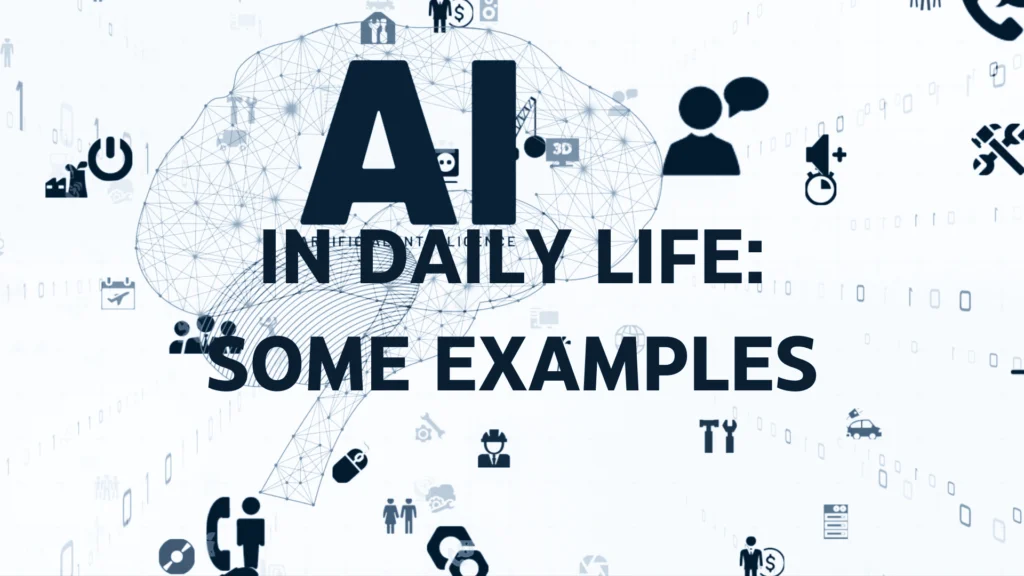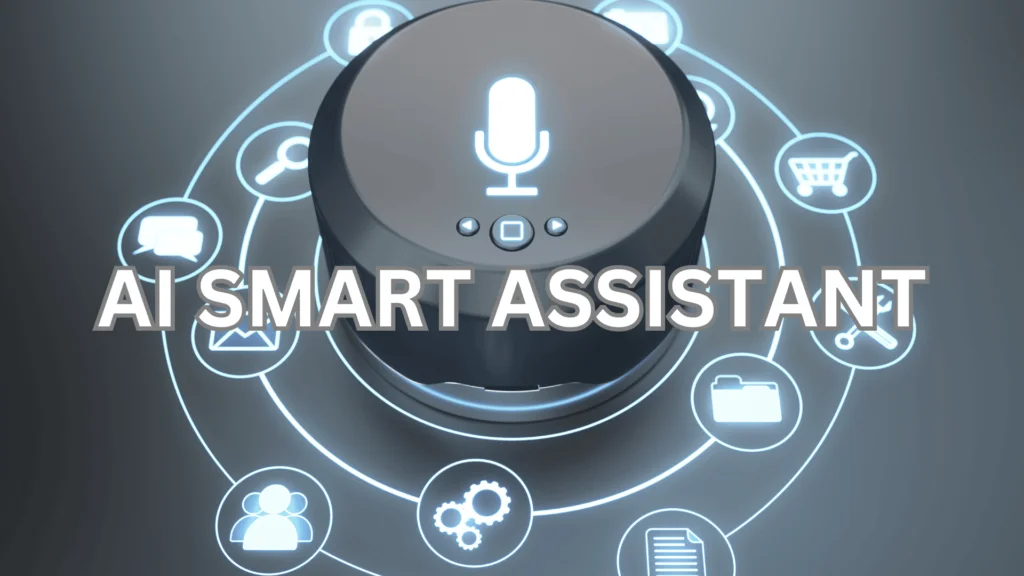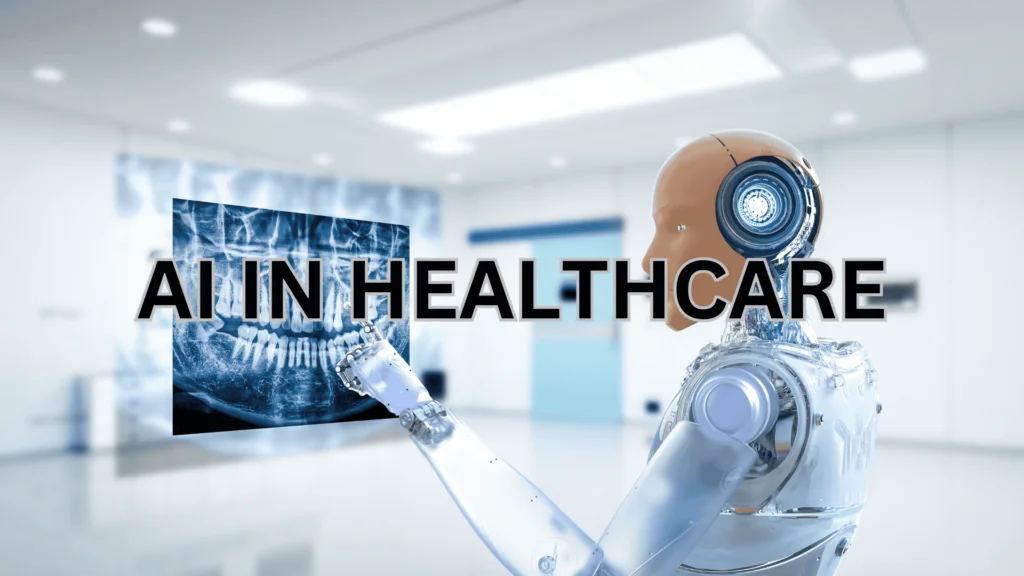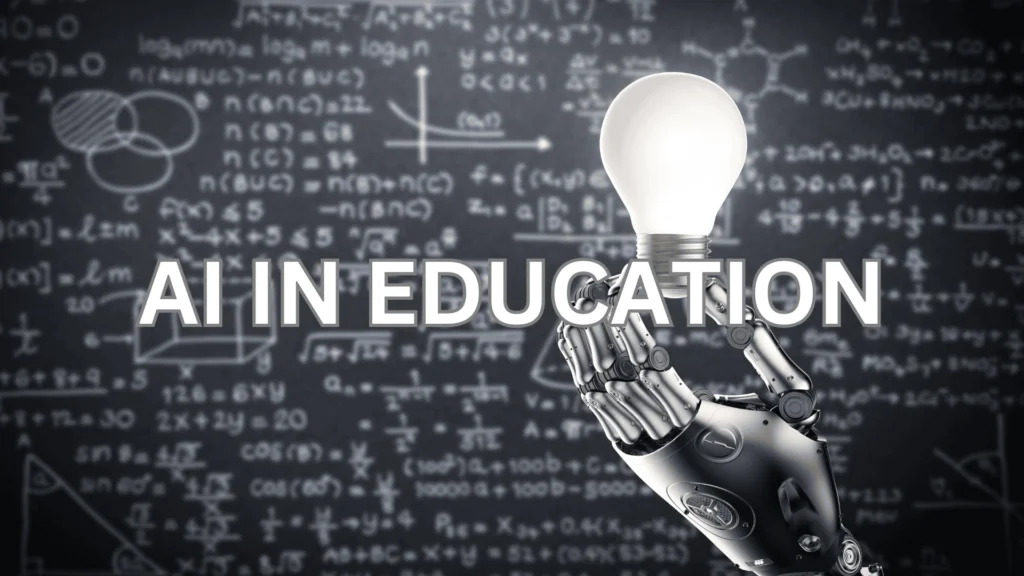Top 9 AI in Daily Life Examples

AI in Daily Life Examples at a Glance
It’s important to understand that artificial intelligence applications and innovations are not some far-off idea that we may see in a couple of years or decades, it is already present in our lives and makes the things we do in our daily practices easier and often more enjoyable. Smart homes or personalized recommendations for shopping, AI is taking this world by storm and is reshaping everyone’s lives. Below, we will take a look at the top 9 AI in daily life examples and what industries use AI, emphasizing the direction in which these technologies are being used and what this implies for the future.

1. Smart Assistants: The New Age Personal Secretary
The first thing we associate with AI in our daily lives is smart devices like Alexa, Google Home, or Siri. These digital helpers have found themselves a permanent place in many households as helpers who can set reminders, and manage the smart home with a simple voice command. They can adapt based on the interaction users have with them, which makes them even better in the long run.
How It Works: Using natural language processing (NLP), smart assistants are able to comprehend voice commands issued to the device. Most of them connect with other applications to offer solutions, time efficiency, and the ability to operate other smart devices. The core applications of these assistants are based on refining such AI algorithms through constant tracking of users’ behavior for higher accuracy and targeted results.
Why It’s Important: Virtual assistants are not mere trends; they are all about convenience in everyday life. With these systems getting more and more advanced, they are expected to perform many functions and in that respect, one can look forward to a revolution in day-to-day usage of the technology, finding ways into other everyday examples of AI.
2. Personalized Recommendations: Your Digital Shopping Advisor
Have you ever thought about how Netflix prescribes the next movie to watch or how Amazon seems to be so smart that it is suggesting products that one might not even know of? This is a very common application of artificial intelligence in the real world. This is what machine learning is all about, the ability to learn from your preferences or behavior and come up with the relevant content and product offerings.
How It Works: Every search, every purchase, and time spent on specific content is monitored by AI systems. It then applies this information to determine what it thinks you would like and then offers suggestions. For example, Netflix’s recommendations are based on show history, ratings, time of day, etc. You can learn more about ecommerce personalization with AI here.
Why It’s Important: Recommendation systems improve user experience since they cut down the time spent in looking for products. This does not only enhance customer satisfaction but also fosters business since it boosts customers’ interaction and purchasing, making it one of the most effective AI applications in daily use.
3. Autonomous Vehicles: The Road Map into the Future
While fully autonomous cars are not popular with many car makers currently testing them, the current generation of automobiles come with AI-integrated systems aimed at improving the safety and efficiency of vehicles. From self-driving electric cars such as Tesla’s Autopilot to new-age cars such as cars with advanced driver assistance systems (ADAS), AI is increasingly central to automobiles.
How It Works: AI in the context of an automobile refers to the technological advancement whereby an automobile has the capacity to perceive traffic through the use of sensors, cameras, and radar. The data is processed in real-time in front of learning algorithms that make decisions like switching lanes, or changing the speed, or even avoiding an object. An example of this is the use of AI by Tesla, a system that adapts from the way all the Tesla cars are driven and enhances the decision-making processes.
Why It’s Important: The use of AI in real-life issues as vehicle autonomy has the potential to minimize traffic accidents and enhancing the flow of traffic which can lead to reduced death and even reduced pollution. This shows that there is a continuous progression in the advancement of AI and therefore the future will feature more complex aspects that will almost give the vehicles an autopilot-like nature.

4. Healthcare Diagnostics: AI as a Medical Partner
There is an increase in the application of Artificial Intelligence in the real world of the health sector with Diagnosis being among the most impacted sectors. From recognizing diseases when they are still in their preliminary form to helping out in intricate operations, AI assets are emerging to be critical to the medical world. For instance, IBM’s Watson is capable of scanning numerous medical records to generate potential diagnoses.
How It Works: When applying AI in healthcare, it refers to deep learning models built on extensive medical records. These models can find patterns and outliers that may be hard to notice even when using the naked eye. For example, AI algorithms identify early indications of cancer in mammograms with better effectiveness than conventional methods. Learn more about AI in healthcare here.
Why It’s Important: Diagnostics based on AI can offer early diagnosis of a disease which is vital for its treatment. Probably one of the most significant business applications of artificial intelligence is its ability to bring major changes in healthcare, where better and faster diagnostics along with individualized approaches to patient treatment can be achieved.
5. Smart Home Devices: Designing A Linked Living Environment
Another real-world applications of AI is smart homes, made by the use of AI, where, for instance, the thermostat, lighting, and security systems in a house are all connected and can be controlled remotely. An example is Nest – a smart thermostat that identifies the user’s routine and then sets the temperature to save energy.
How It Works: Smart home devices work continuously through artificial intelligence to adapt to your routines and schedule. For instance, smart thermostats study your schedule and then control the temperature to effectively conserve energy when you are away. Likewise, smart security cameras possess the ability to tell between humans and pets in order to minimize false alerts.
Why It’s Important: Smart homes through the integration of Artificial Intelligence, improve comfort, power usage, and safety. Scheduling recurring actions and making changes to them depending on activity response is one of the most evident examples of how AI can be utilized in an individual’s life.
6. Customer Service Chatbots: The AI Frontline of Customer Interaction
The days are gone when one would spend several hours on the phone trying to get through to customer service. Most of the customer interactions are now managed by AI-powered chatbots who are fast, efficient, and sometimes astonishingly correct. H&M and Bank of America are companies that utilize AI chatbots in tracking & tracing an order plus account management.
How It Works: The conversation-based system applies NLP and machine learning to decipher customer queries and offer the right input. It means they can attend to both basic questions such as Frequently asked questions and problem-solving type of queries. These bots become smarter from each dialogue they have with the customers and hence become effective at their duties. Learn more about AI in customer service here.
Why It’s Important: The advantages of chatbots include always being available for customers who need help and shortening the time that a customer has to wait for assistance. To the businesses, this equals to the optimal cost decrease and customer satisfaction increase, thus proving the significance of business applications of artificial intelligence.
7. Facial Recognition: Security System Based on Artificial Intelligence
Facial recognition is clearly transforming every sphere of life, from unlocking our phones to raising security levels at airports. Apple uses AI for Face ID for unlocking the device and account while Facebook uses it for sorting photos.
How It Works: Biometrics like facial recognition use AI algorithms to capture specific details in an individual’s face, such as the space between the eyes or the shape of the nose, among others. We gradually calibrate and enhance such systems by feeding them vast amounts of images for better performance.
Why It’s Important: Facial recognition brings privacy issues into question, however, this technology is very helpful in the case of security and other convenience factors. The effectiveness of such identification makes it plausible in numerous fields, including security and police.
8. AI in Daily Life for Language Translation: Breaking Down Global Barriers
Applications such as Google Translate have made real-time translation of languages more convenient than ever before. These tools are particularly handy when traveling, conducting business, and in our day-to-day interactions with other individuals.
How It Works: AI translation services employ neural networks and thus they translate text or speech easily. They are based on tons of bilingual texts and continuously learn and revise their translations.
Why It’s Important: Language translation AI is not just a luxury but a tool that promotes cultural interchange. Because it provides live translation of conversations between different languages, AI breaks barriers promotes international cooperation, and indicates a myriad of practical uses in contemporary society.

9. AI in Daily Life for Personalized Learning: An Educational Tool
Education is another area in which AI has impacted and is the best examples of AI used in everyday life. Free learning applications such as Duolingo and Khan Academy apply the use of artificial intelligence to recommend content consistent with the learner’s competency and preferred learning mode.
How It Works: Smart educational systems deal with study performance by a student and adapt the course content. For instance, if a learner performs poorly on a specific content, the system can supply further links or different instructions. These systems also recommend where a student might require extra practice, thus giving more information for an ideal learning environment. Learn more about AI in education here.
Why It’s Important: AI in education is gradually steering educational systems toward a personalized learning approach that takes each learner’s unique needs into account. Not only does this approach enhance learning, but it also plays a role in increasing education accessibility for all.
The Takeaway on AI in Daily Life Examples
There are different types of AI in daily life examples, with the most common being AI assistants in most homes, alarms, and chatbots that can solve almost anything. The examples shown above show how prominent and important the use of AI is in our society. With time, the future of AI also has more prospects to adapt more tasks, experiences, and environments to our lives.
From recommendations for individuals to home appliances, assistants, or chatbots for customer support, AI in daily life examples are apparent. Moving forward the concept of using AI across different fields of the economy will help to open new vistas. This will also expand the realm of possibilities, thereby gradually erasing the differences between the capabilities of people and computers.
These are some of the AI in our daily life examples and the benefits, and opportunities for change it represents. Real-world applications of AI, undoubtedly will precipitate breakthroughs that can revolutionize daily lives and industries as we know them.